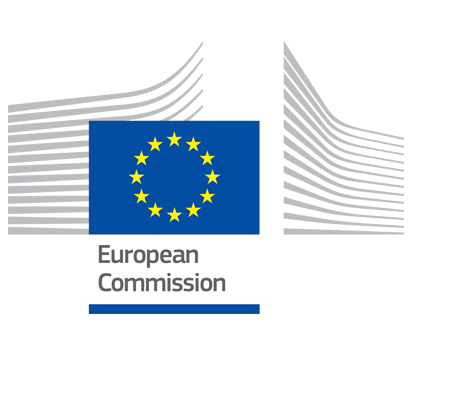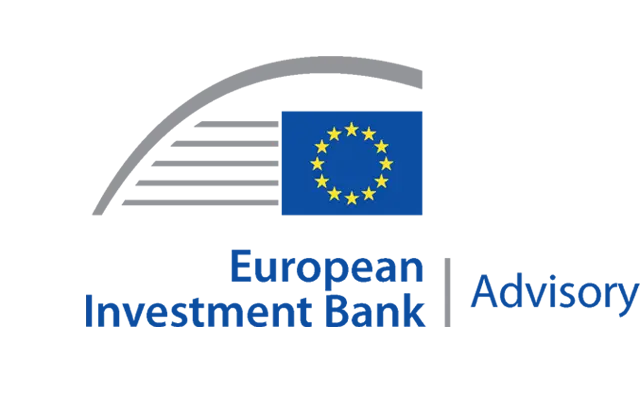Glossary
Find an explanation of most used terms in relation to financial instruments
Glossary
| Title | Term Definition | ||||||||||||||||
|---|---|---|---|---|---|---|---|---|---|---|---|---|---|---|---|---|---|
| Beneficiary | In the context of financial instruments, the body that implements the holding fund or, where there is no holding fund structure, the body that implements the specific fund or, where the managing authority manages the financial instrument, the managing authority |
||||||||||||||||
| Body implementing a financial instrument | A body, governed by public or private law, carrying out tasks of a holding fund or specific fund. |
||||||||||||||||
| Body providing the underlying loans | A specialised financial institution (e.g. commercial lending banks) providing loans to final recipients of a guarantee financial instrument. |
||||||||||||||||
| Early-stage capital | Seed and start-up capital. |
||||||||||||||||
| EGESIF | Expert Group on ESIF implementation issues |
||||||||||||||||
| Equity investment | Provision of capital to a firm, invested directly or indirectly in return for total or partial ownership of that firm and where the equity investor may assume some management control of the firm and may share the firm's profits. |
||||||||||||||||
| European Regional Development Fund (ERDF) | Fund financed by European Union budgetary resources, set up in 1975 to stimulate economic development in the least prosperous regions of the EU. As one of the EU's Structural Funds, ERDF seeks to correct imbalances between regions across the EU and enhance economic and social cohesion. |
||||||||||||||||
| Ex-ante assessment | An assessment which precedes the European Structural and Investment Funds (ESIF) programme contribution to a financial instrument and which establishes evidence of market failures or sub-optimal investment situations and the estimated level and the scope of public investment needs, including types of financial instruments. |
||||||||||||||||
| Final recipient | A legal or natural person receiving financial support from a financial instrument. |
||||||||||||||||
| Financial instrument | Union measures of financial support provided on a complementary basis from the budget to address one or more specific policy objectives of the Union. Such instruments may take the form of equity or quasi-equity investments, loans or guarantees, or other risk-sharing instruments, and may, where appropriate, be combined with grants. |
||||||||||||||||
| Financial instrument products | Also called financial products, are types of interventions that may be offered via financial instruments to support projects. The choice of the financial products will depend on the market failures, suboptimal investment situations and investment needs to be addressed as well as the acceptable level of risk, reward and ownership. |
||||||||||||||||
| Fund of funds | A fund set up with the objective of contributing support from a programme or programmes to several financial instruments. Where financial instruments are implemented through a fund of funds, the body implementing the fund of funds shall be considered to be the only beneficiary. |
||||||||||||||||
| Funding agreement | Contract governing the terms and conditions for contribution from ESIF programme to financial instrument. This will be established between a managing authority and the body that implements the fund of funds or between a managing authority or the body that implements the fund of funds and the body that implements the financial instrument. | ||||||||||||||||
| Guarantee | A written commitment to assume responsibility for all or part of a third party's debt or obligation or for the successful performance by that third party of its obligations if an event occurs which triggers such guarantee, such as a loan default. |
||||||||||||||||
| Holding fund | A fund set up under the responsibility of a managing authority under one or more programmes, to implement one or more specific funds. |
||||||||||||||||
| Leverage effect | “The Union contribution to a financial instrument shall aim at mobilising a global investment exceeding the size of the Union contribution according to the indicators defined in advance”. Article 223 – The leverage effect of Union funds shall be equal to the amount of finance to eligible final recipients divided by the amount of the Union contribution. In the ESIF context, the leverage is the sum of the amount of ESIF funding and of the additional public and private resources raised divided by the nominal amount of the ESI Funds contribution. |
||||||||||||||||
| Loan | An agreement which obliges the lender to make available to the borrower an agreed sum of money for an agreed period of time and under which the borrower is obliged to repay that amount within the agreed time. |
||||||||||||||||
| Loan default | A situation where a loan is not paid back by the borrower, the final recipient, which triggers the use of the guarantee to cover the losses of the lender. |
||||||||||||||||
| Management costs and fees | Management costs refer to direct or indirect cost items reimbursed against evidence of expenditure. Management fees refer to an agreed price for services rendered established via a competitive market process, where applicable. Management costs and fees are based on a performance based calculation methodology. |
||||||||||||||||
| Managing authority | A national ministry/regional authority/local council, or another public or private body responsible for the efficient management and implementation of an operational programme. |
||||||||||||||||
| Multi-region assistance (MRA) | This initiative aims to support the potential use of financial instruments in investment priority areas that are shared by regions from at least two different EU states. |
||||||||||||||||
| Operation | A project, contract, action or group of projects selected by the managing authorities of the programmes concerned, or under their responsibility, that contributes to the objectives of a priority or priorities; in the context of financial instruments, an operation is constituted by the financial contributions from a programme to financial instruments and the subsequent financial support provided by those financial instruments. In the case of financial instruments organised through a fund of funds, an operation is constituted by the contribution to the fund of funds, subsequent contributions to financial intermediaries and subsequent investments in final recipients. |
||||||||||||||||
| Portfolio guarantee | A facility that guarantees a portfolio (i.e. a collection/group) of loans to be made by a specialised financial institution to final recipients, for which the parameters have been defined but individual borrowers are not yet known because the loans are only about to be given. |
||||||||||||||||
| Quasi-equity investments | A type of financing that ranks between equity and debt, having a higher risk than senior debt and a lower risk than common equity. Quasi-equity investments can be structured as debt, typically unsecured and subordinated and in some cases convertible into equity, or as preferred equity. |
||||||||||||||||
| Risk-sharing instrument | A financial instrument which allows for the sharing of a defined risk between two or more entities, where appropriate in exchange for an agreed remuneration. |
||||||||||||||||
| Securitisation | A transaction or scheme, whereby the credit risk associated with an exposure or pool of exposures is tranched, having both of the following characteristics: |
||||||||||||||||
| Shared management | Member States are entrusted by the European Commission with the implementation of operational programmes and the allocation of funds to final recipients (e.g. SMEs, municipalities, natural persons etc.). |
||||||||||||||||
| Shared management funds | Тhe funds governed by the Common Provisions Regulation, which include the European Regional Development Fund (ERDF), the European Social Fund Plus (ESF+), the Cohesion Fund (CF), the European Aquaculture, Maritime and Fisheries Fund (EMFAF), the Asylum, Migration and Integration Fund (AMIF), the Internal Security Fund (ISF) and the Border Management and Visa Instrument (BMVI). |
||||||||||||||||
| SMEs | Small and medium-sized enterprises – as defined in EU law: EC recommendation 2003/361.
|
||||||||||||||||
| Specific fund | A fund through which a managing authority or a holding fund provides financial products to final recipients. |
||||||||||||||||
| Support from the ESI Funds | Support from the ESI Funds means support from one or more of the following funds: European Regional Development Fund, European Social Fund, Cohesion Fund, European Agriculture Fund for Rural Development, European Maritime and Fisheries Fund. Support from the ESI Funds does not include the national co-financing. |
||||||||||||||||
| Working capital | Difference between current assets and current liabilities of an enterprise. |

